During the car assembly process, there are components permanently affixed to the exterior of the vehicle, including logos, license plates, body side moldings, etc. These parts require high-performance and reliable adhesive technology that can effectively meet the rigorous automotive manufacturing processes. Although there are various bonding methods including welding, bolts, screws, and liquid adhesives (glue), double-sided super adhesive tape with a foam layer is the preferred technology in the automotive industry due to its reliability, cost-effectiveness, and quick assembly capabilities.
Positions for using tape in car assembly
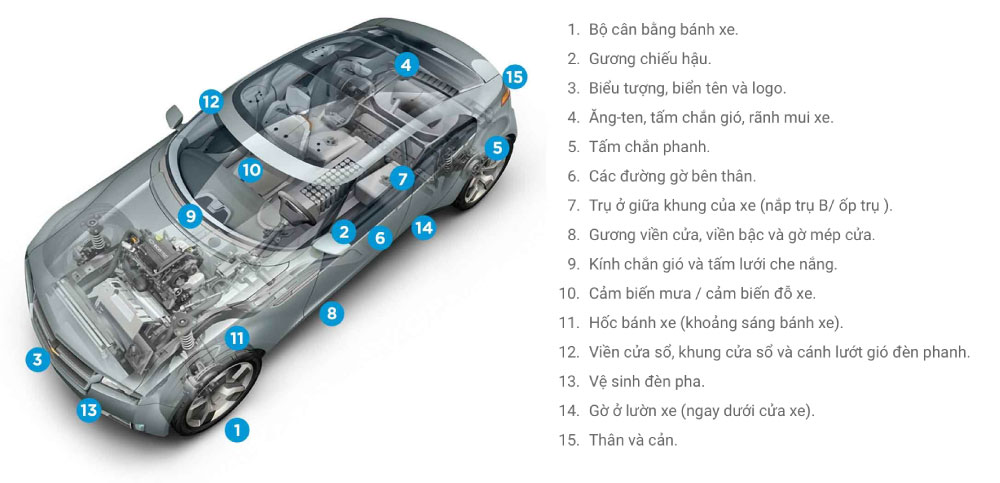
- Wheel balance weights.
- Rearview mirrors.
- Emblems, nameplates, and logos.
- Antennas, wind deflectors, roof channels.
- Brake shields.
- Body side moldings.
- Pillars in the middle of the vehicle frame (B-pillar trim).
- Door mirror covers, door sills, and door edge guards.
- Windshield and sunshade mesh.
- Rain sensors / parking sensors.
- Wheel arches (wheel openings).
- Window trim, window frames, and spoiler brake lights.
- Headlight cleaning.
- Side skirts (under the vehicle door).
- Body and bumper.
Why use tape for assembly
- Tư vấn dán kim loại với kim loại trong ngành lắp ráp
- Băng keo cường lực cho dây chuyền sản xuất ô tô
- Băng keo cường lực cho lắp ráp ô tô
- Băng keo cường lực dán kính ô tô
- Băng keo cường lực cho ngành công nghiệp ô tô
BowTape brand tape is a new solution, specially designed to address many typical assembly issues that other bonding technologies lack. Assembly with tape is faster and simpler than with glue because there is no waiting time for drying. Using tape for assembly only requires a conveyor belt press to apply proper pressure onto the tape without the need for any other special processing equipment.
Foam-backed tape is typically applied with a pressure of 15 PSI for at least five seconds. Rolls of grooved tape or pre-cut tape pieces suitable for the bonding area can be easily distributed.
Hitta’s tape solutions like BowTape can operate in automated assembly lines, enhancing efficiency and reducing manual errors. An important recommendation is always to first clean the surface with isopropyl alcohol (IPA) or a mixture of IPA and water.
Tape provides a clean appearance without creating holes or stress concentrations, reducing the risk of leaks, corrosion, and surface damage. For applications using mechanical clips, the combination of adhesive tape can help securely hold parts onto the vehicle, improve visibility, and reduce noise and rattling sounds from components.
Advantages of assembly with tape
Load is distributed over a wider surface area. This helps eliminate stress concentration and minimizes differences in material properties, such as mismatch in elastic modulus and coefficient of thermal expansion.
Adhesive and foam are highly flexible, thus more resilient to light impacts and stronger than other fragile assembly methods.
The flexibility of the foam allows the tape to conform to the contours and shapes of the vehicle design, providing better overall bonding and load distribution.
There is no residual stress like with screws or nuts due to heat, which is crucial when attaching decorative parts of varying lengths, where screws can lead to warping or deformation depending on the coefficient of thermal expansion.
Bond strength increases after initial assembly, reaching peak strength after 72 hours as additional adhesive bonds form.
Applications of tape benefits:
- Sealed bonding, vibration absorption, and shock absorption.
- Good insulation and soundproofing.
- Non-conductive joints, crucial for bonding various metals and alloys.
- Reduce or eliminate rattling noises from mechanical screws.
- Clean, neat appearance.
- Improve production throughput.
- Vehicle body surfaces are logically arranged to minimize drag.
Basic structure of adhesive tape
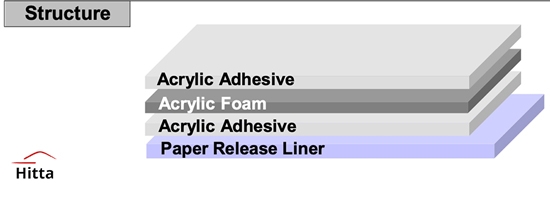
Foam tape consists of a foam core coated on each side with adhesive material. The adhesive can be acrylic-based, silicone-based, or rubber-based. Bonding technologies include pressure-sensitive adhesives (PSA), heat-activated adhesives, and hot melt adhesives.
BowTape adhesive tape consists of layers of acrylic PSA coating on various foam cores. Please contact Hitta for suitable advice.
As the exclusive distributor of BowTape structural adhesive tape in the Vietnamese market, Hitta JSC has the capability, expertise, and knowledge of the products and solutions from BowTape that the company distributes, providing more value and maximizing profits for Hitta JSC’s partners and customers. Contact information:
- ☎️ Hotline: 090.8611.011 (Mr. Dương).
- ✉️ Email: hittajsc@hitta.vn
Products:
-
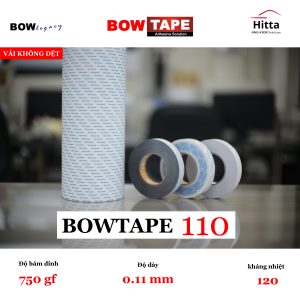 Bow Tape 110 (0.11 mm)
Bow Tape 110 (0.11 mm) -
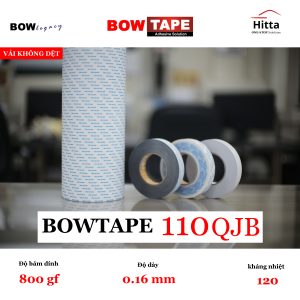 Bow Tape 110QJB (0.16 mm)
Bow Tape 110QJB (0.16 mm) -
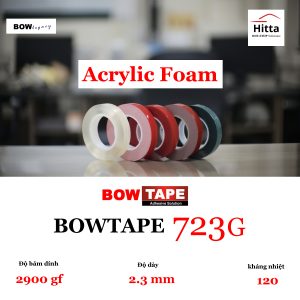 Acrylic Foam Tape Bow Tape 723G (2.3 mm)
Acrylic Foam Tape Bow Tape 723G (2.3 mm) -
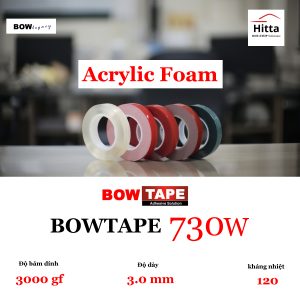 Acrylic Foam Tape Bow Tape 730W (3.0 mm)
Acrylic Foam Tape Bow Tape 730W (3.0 mm) -
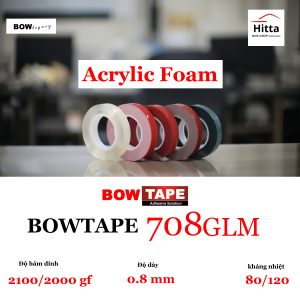 Acrylic Foam tape with LSE coating – Bow Tape 708GLM (0.8 mm)
Acrylic Foam tape with LSE coating – Bow Tape 708GLM (0.8 mm) -
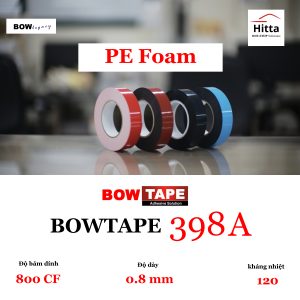 Bow Tape PE foam Tape 398A (0.8 mm)
Bow Tape PE foam Tape 398A (0.8 mm) -
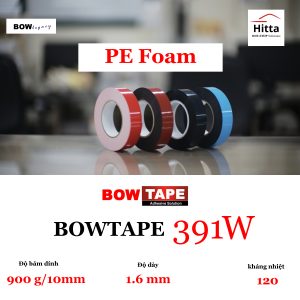 Bow Tape 391W (1.6 mm)
Bow Tape 391W (1.6 mm) -
 Bow Tape 300NHK
Bow Tape 300NHK -
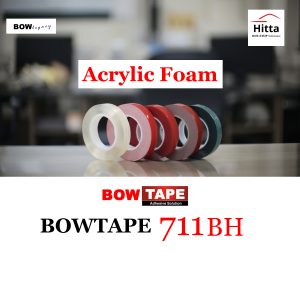 Acrylic Foam Tape – Bow Tape 711BH
Acrylic Foam Tape – Bow Tape 711BH -
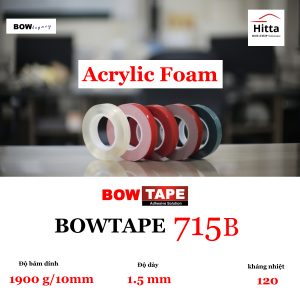 Acrylic Foam Tape – Bow Tape 715B (1.5 mm)
Acrylic Foam Tape – Bow Tape 715B (1.5 mm) -
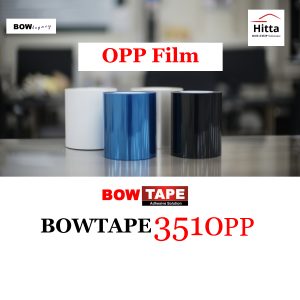 Bow Tape 3510PP (0.1 mm)
Bow Tape 3510PP (0.1 mm) -
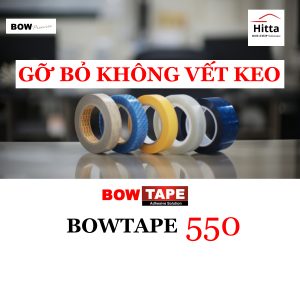 Bow Tape 550 (0.17 mm)
Bow Tape 550 (0.17 mm) -
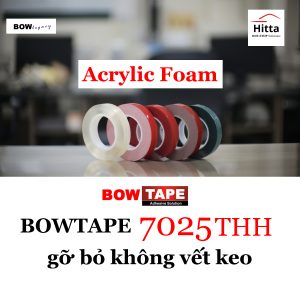 Acrylic Foam Tape – Bow Tape 7025THH
Acrylic Foam Tape – Bow Tape 7025THH -
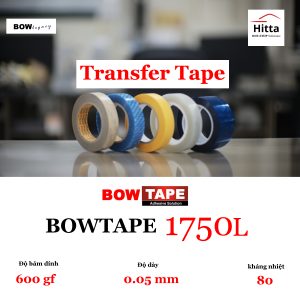 Bow Tape 1750L (0.05 mm)
Bow Tape 1750L (0.05 mm) -
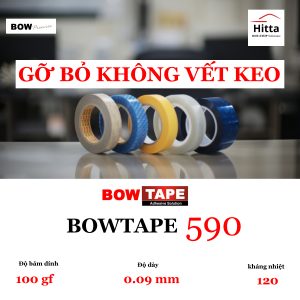 Bow Tape 590 (0.09 mm)
Bow Tape 590 (0.09 mm) -
 Bow Tape 710SF (1.0 mm)
Bow Tape 710SF (1.0 mm) -
 Bow Tape 3510B
Bow Tape 3510B -
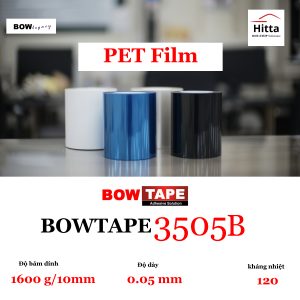 Bow Tape 3505B
Bow Tape 3505B -
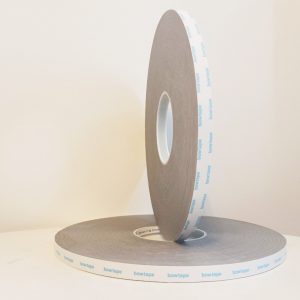 Bow Tape 716GS
Bow Tape 716GS -
 Bow Tape 706BH (0. 6mm)
Bow Tape 706BH (0. 6mm) -
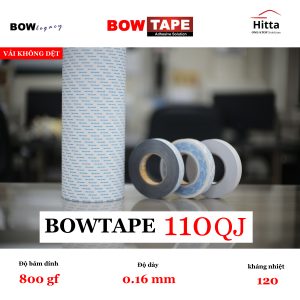 Bow Tape 110QJ (0.16 mm)
Bow Tape 110QJ (0.16 mm) -
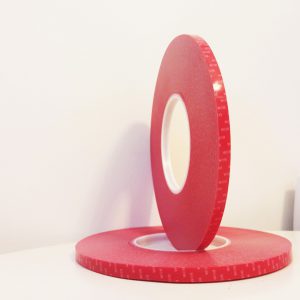 Bow Tape 704WE (0.4 mm)
Bow Tape 704WE (0.4 mm) -
 Bow Tape 706BH (0.6 mm)
Bow Tape 706BH (0.6 mm) -
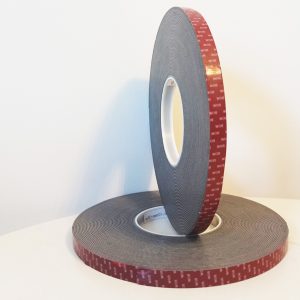 Bow Tape 708GSX (0.8 mm)
Bow Tape 708GSX (0.8 mm) -
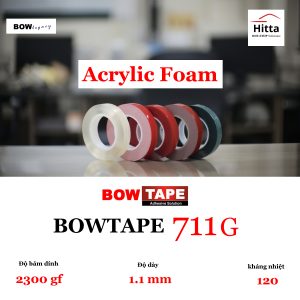 Acrylic Foam Tape Bow Tape 711G (1.1mm)
Acrylic Foam Tape Bow Tape 711G (1.1mm)
Durability of super adhesive tape
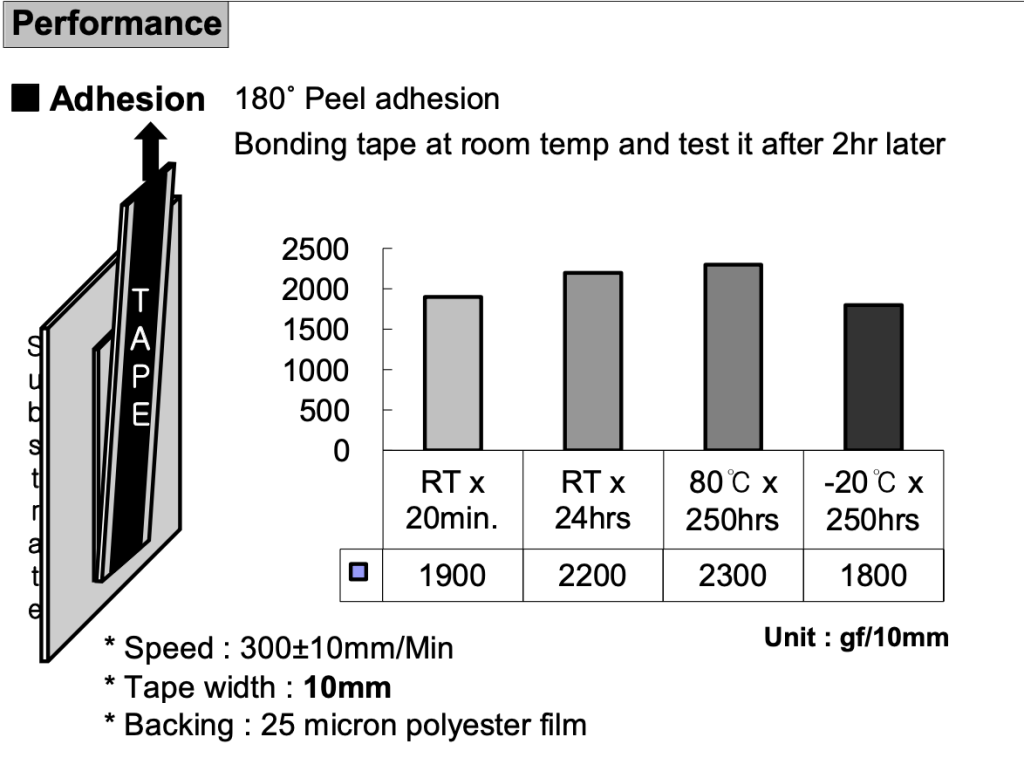
Adhesion strength testing
The test is as described in the figure:
- The peel angle is 180 degrees.
- The industrial strength tape is pulled for over 2 hours at room temperature.
- Result: good adhesion, minimal displacement, passing the test.
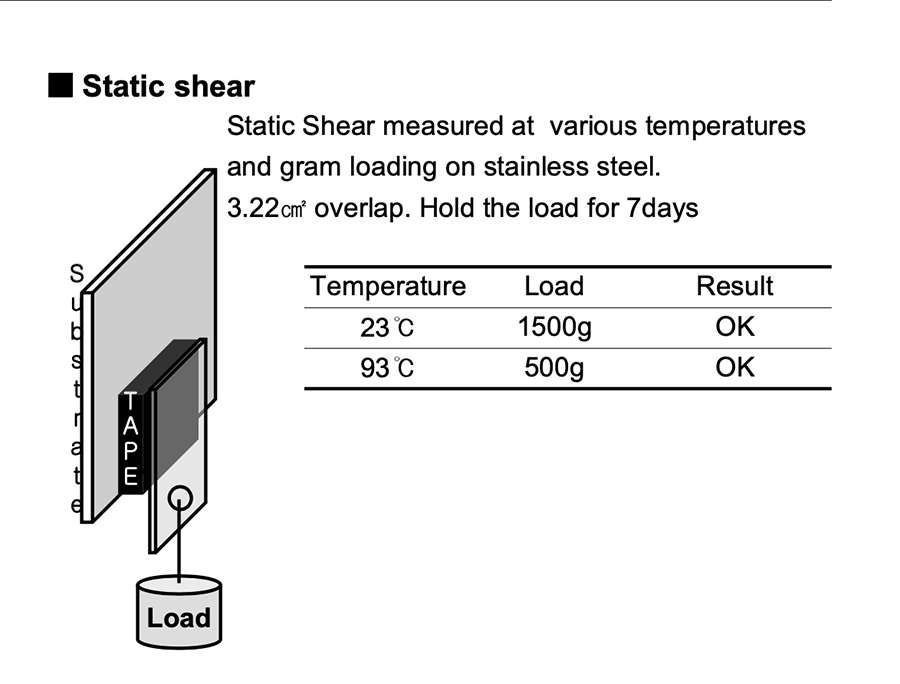
Gravity load testing
The test is as described in the figure:
- Enduring load for 7 days at different temperatures.
- Load 1: 1500g at 23°C.
- Load 2: 500g at 93°C.
- Result: good adhesion, passing the test.

Tensile strength test in both directions
The test is as described in the figure:
- Enduring tension from both sides (top and bottom) at room temperature for over 2 hours.
- Result: good adhesion, minimal displacement, passing the test
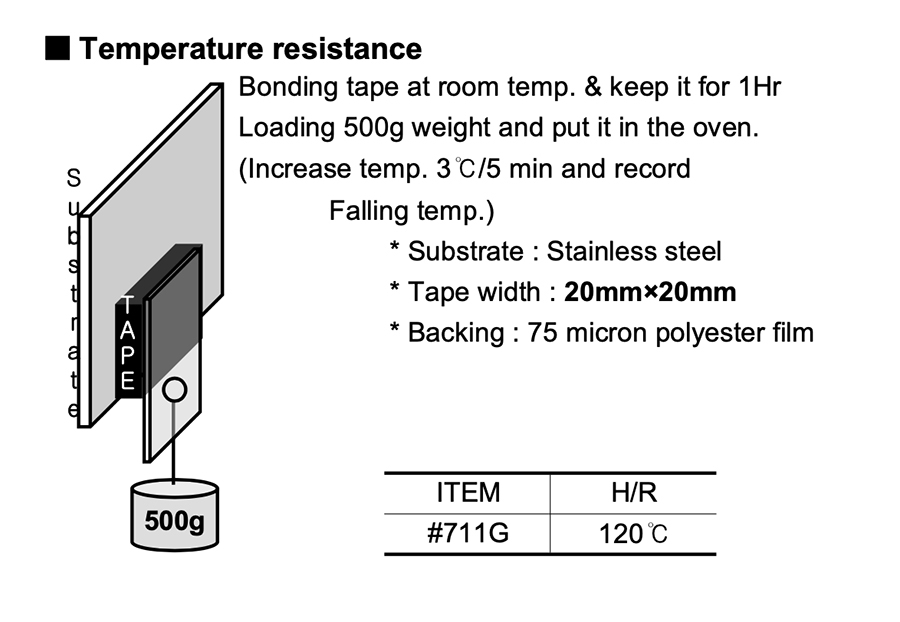
Temperature increasing durability test
The test is as described in the figure:
- Enduring a load of 500g at room temperature for one hour & gradually increasing the temperature.
- Every 5 minutes, the temperature increases by 3°C.
- Result: good adhesion, minimal displacement, passing the test.
